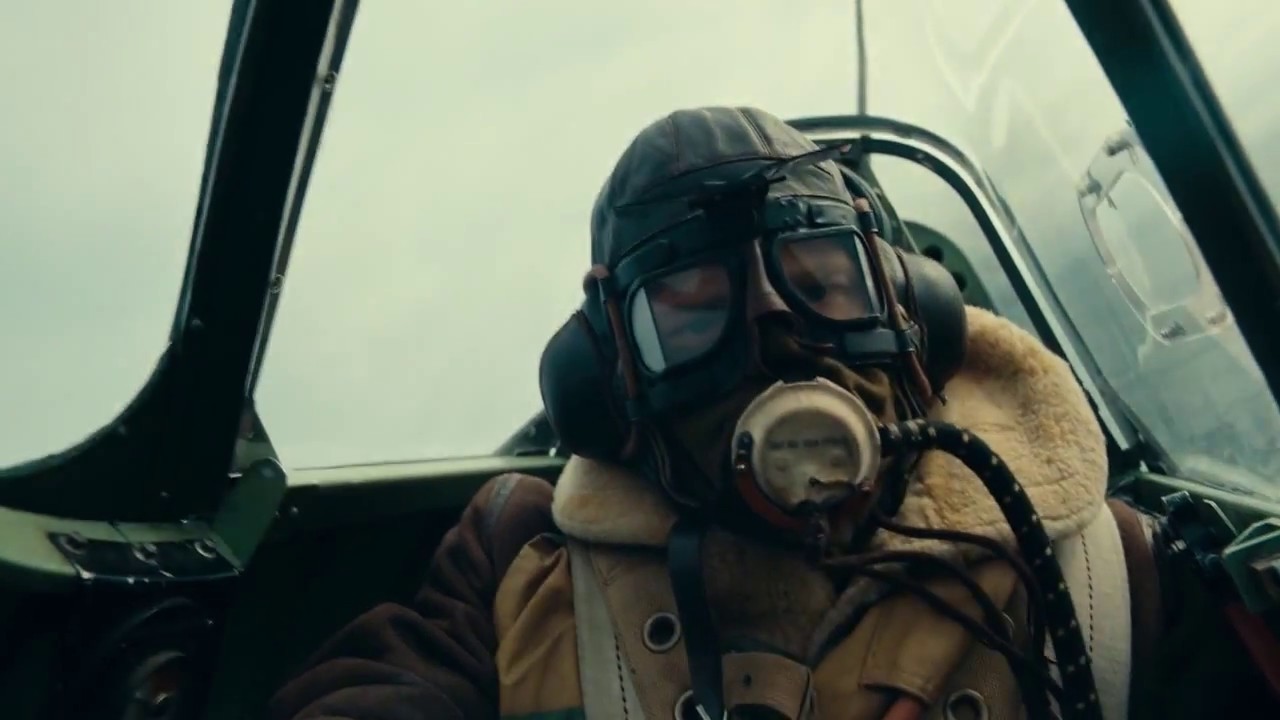Air Combat Breathtaking! So Learn HOW to SURVIVE it NOW!
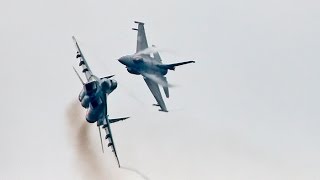
Air combat survival is all about energy and speed management. Maintaining energy better than your opponent will give you the advantage to maneuver your nose get into position and kill your opponent.
It’s important to understand important details about your aircrafts performance like its corner speed. This is super important for you to stay alive. Corner speed is the speed where you can maintain the maximum turn rate and maximum G’s without losing airspeed.
There is also instantaneous turn speed that allows you to pull maximum Gs and your best nose position but its not sustainable. You need to understand the differences here. We’ll will discuss this and more below to keep you alive in air combat in easy chunks. I will also introduce concepts like one or two circle flights, what it is, how to recognize which is which and what one you should employ!
The Different Corner Speeds in Air Combat.
Corner speed is the speed at which your aircraft will be able to turn the fastest. By maintaining this speed you can pull the maximum G’s and maintain them. This will give you the highest rate of turn in Degrees per sec. Instantaneous corner speed is a speed where you can get the maximum turn rate but cannot sustain it hence it is instantaneous. This can help you get your nose pointing at an enemy but you cannot maintain this for long. The need to dump your nose to maintain speed is often required but one you get near the ground this option is gone.
- Latest CPU’s Available Now – Amazon.com
- Get a NEW GPU Best Performance – AMAZON.com
- Upgrade RAM Here today – AMAZON.com
- Prebuilt PC Options – AMAZON.com
One and Two Circle Fights Whats Your Choice?
One and Two Circle flights are geometry by which combat takes place. There are very different reasons for using either a one circle or two circle approach in combat. These depend on your aircraft strengths and your opponents weaknesses. You need to know your aircraft as well as your enemy. Lets look at the differences below.
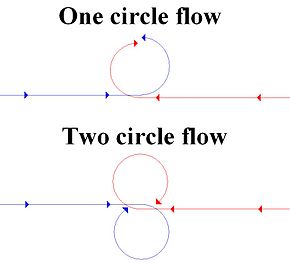
Once Circle – Radius Fight – High AOA Fighters.
Once Circle fights are about how fast you can get your nose around the circle in a TURN RADIUS fight. You can identify a ONE CIRCLE fight by the opposing aircraft turning towards your nose. Aircraft with high AOA capability will have the advantage in this fight like the Mirage 2000 and F-18 for example.
Two Circle – Rate Fight – The Home of the Viper.
Two Circle fights are where the aircraft turn away from each other in the merge and create two independent circles in the sky. This is either horizontally or vertically. Remember we are dealing in a three dimensional plane of motion. The two circle fight is great for aircraft that have the highest rate of turn at the corner speed. The F-16 cannot compete in AOA (1 circle fight ) with these aircraft but can maintain 9 G’s at a given speed and get around the circle much faster than them in a rate fight.
Identifying a one or two circle fight can be a challenge but if you are turning towards the aircraft nose to nose then your one circle. If your turning away from each other your in a two circle fight.
Energy Management – Crucial to Survival!
In air combat energy and speed are life! Ensuring you maintain good airspeed at all times will keep you alive. Energy comes with speed and you get it by the power of your engine as well as what is often called gods G which comes from diving once you have altitude.
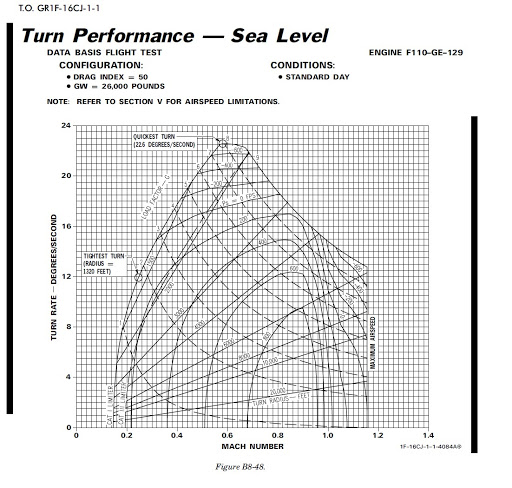
You will find aircraft like the Mirage and F-18 that like to use their high AOA abilities and point their noses down to keep up speed and G’s while turning. This works till they get to low to the ground and can no longer dive. This is where a true rate fighter like the F-16 with its enormously powerful engine can maintain high G”s and rate of turn and kill the Mirage or F-18 Hornet which cannot maintain the high rate of turn the F-16.
The Diagram is a common performance chart. The left side is turn rate in degrees per second and the lower numbers are the Mach numbers in speed. You can simply draw a line up at a given speed to intersect with a rate of turn figure. You can search these on Google but note speed as well as weight and altitude make a difference when comparing. Ensure you compare apples with apples to find your desired performance.
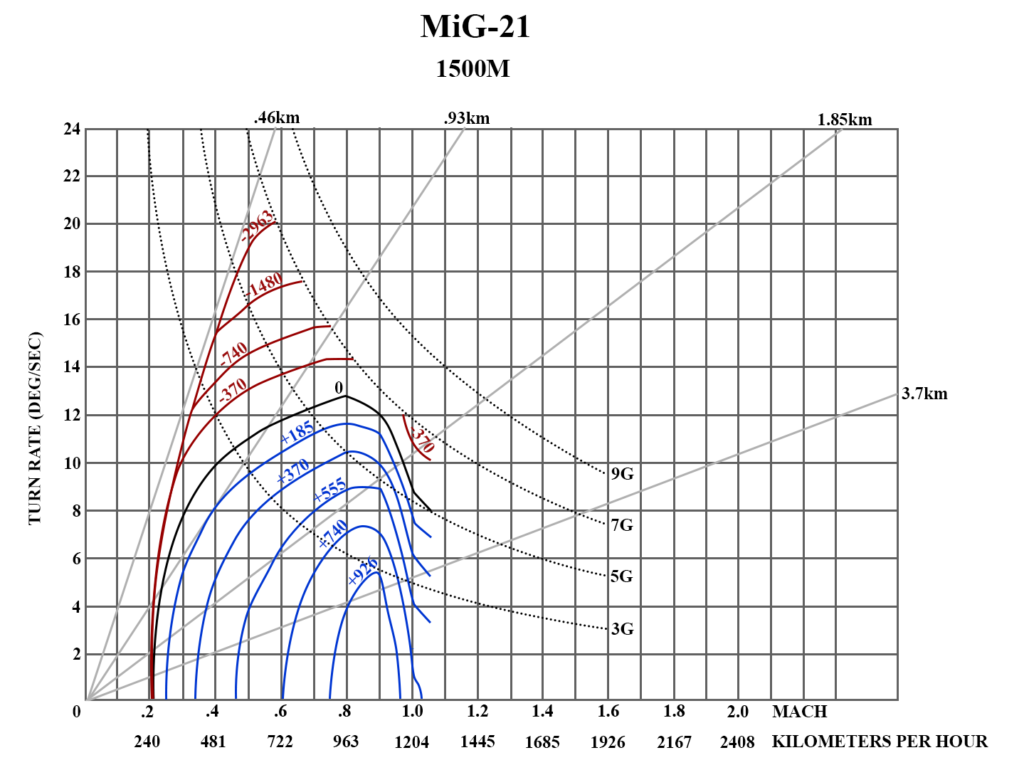
If your looking for your best turn radius for a one circle fight for example then the graph also shows this. It states the best turn circle for the aircraft is 1200m. Important to know if this becomes your plan in the engagement. You can check this with the curves that appear on the graph.
Lets look at some examples and how they differ.
Note there is also the turn Radius on these graphs so check out your rate and radius at given speeds. The F16 best performance at sea level to maintain 9Gs is about 420 knots can turn at 20 degrees per second. So in 18 seconds the F16 would have completed a full 360 degrees. The Mirage 2000 at 330 Kts can get an impressive 23.5 Deg/sec at 15,000 ft so don’t compare these two directly. Sea level to 15000 ft could be a very different performance chart.
The Mig 21 has an impressive 20 deg/sec at 7G at .6 Mach at an altitude of 15,000M so that’s about 45,000 ft. It loves altitude. As you can see you have to get comparable data to be sure of your fighting plan against an enemy.
Pursuit Curves – Lead/Pure/Lag/ What it all means!
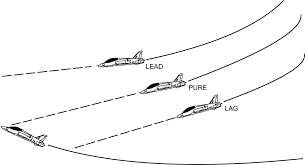
Fighting visually when in a knife fight between say a Mig29 and an F16 is all about being eyes out of the cockpit. Look at the plan form of the aircraft. If you can see the top of the aircraft its in lag pursuit. If you see it nose on it is in pure pursuit and if its nose is high and you can see the underside of the aircraft you need to move because he has got lead on you and can shoot you!
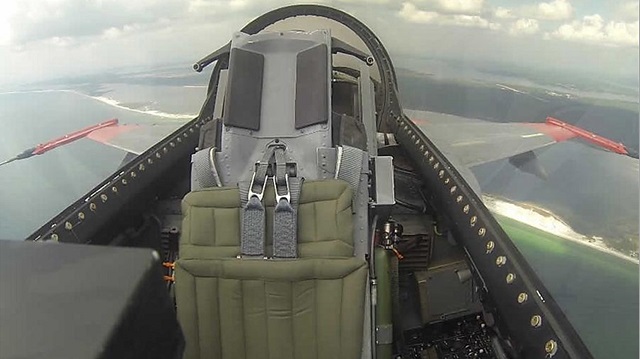
Here is an example of the three pursuit profiles. From the target point of view you can see the aspect the attacking aircraft will be in when in view.
If your attacking the use of these three pursuit angles is very different.
Planning your closure to an aircraft is important. In lead pursuit your flight path marker is ahead of the target. You will close fastest in this mode. Place the flight path marker( -o- )on the target and you will be in pure pursuit. Your closure rate wont be as fast. Thirdly is lag pursuit where the flight path marker is behind the target.
Its pretty simple isn’t it! Well no its not but with the information above I hope it now gives you more of an understanding of fighting and staying alive in DCS or any other combat simulator. It all applies to jet fighters to WW1 Bi Planes where this was all worked out over 100 years ago.
Now you understand the types of pursuite you can control your closure rate on the bandit so your air combat survival will be increased and your attack success will improve with training.
- Joystick / HOTAS – AMAZON.com
- Rudder Pedals – AMAZON.com
- Throttle Quadrant – AMAZON.com
- Gaming Chair – AMAZON.com
- VR Headset – AMAZON.com
Conclusion
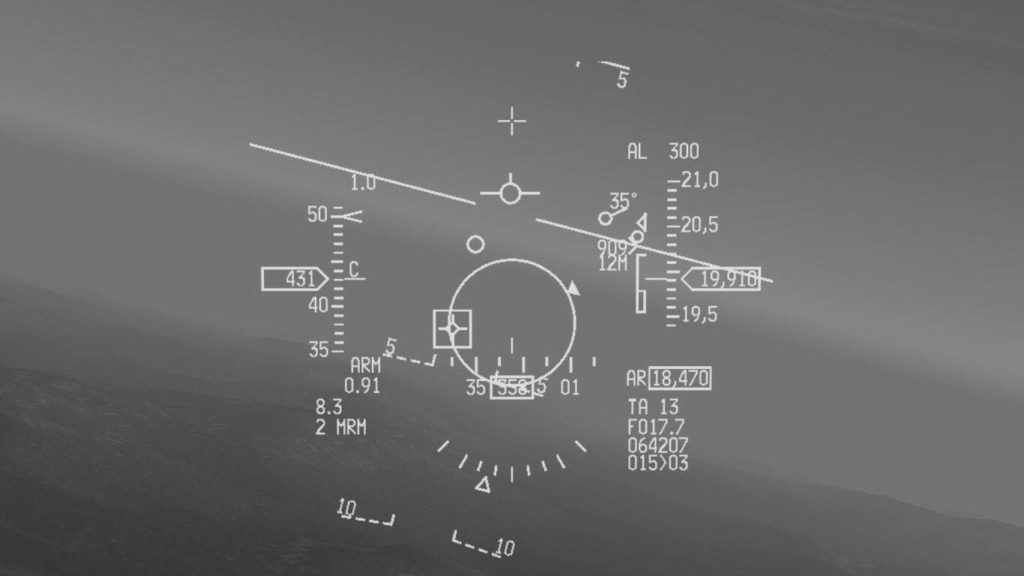
Knowing your current performance is crucial at every moment. If your looking at an enemy and they are moving backwards in your canopy you know your losing! If they are moving forward in a turn then its simple your getting around the circle better than them. Keep your corner speed and power till they are in you sights and shoot them.
Its so important to be aware of your energy state every second of a fight. Keeping your best turn rate and trying to fight your fight and not theirs! You have to be planning every second. Counter move to counter move will keep you thinking and alive. Its when you run out of energy and ideas your dead.
Fight, practice and practice some more!

Author.
Brendon McAliece is a multi lingual-expat who brings over three decades of flight simulator/PC building experience as well as over two decades of real world jet fighter experience as a weapons/egress technician.
He holds a sport pilot certificate giving him real world flying experience. His travels have taken him from Europe to the Middle East, Asia and his home of Australia. He has a passion for travel, languages, Flight simulation as well as Guitaring and Coffee. You can read more in his blogs below.
Learn more @
DreamingGuitar.com – DreamingCoffee.com – LetsFlyVFR.com
( HOME – BLOG – SHOP – ABOUT )
As an Amazon affiliate I may earn on qualifying sales.
